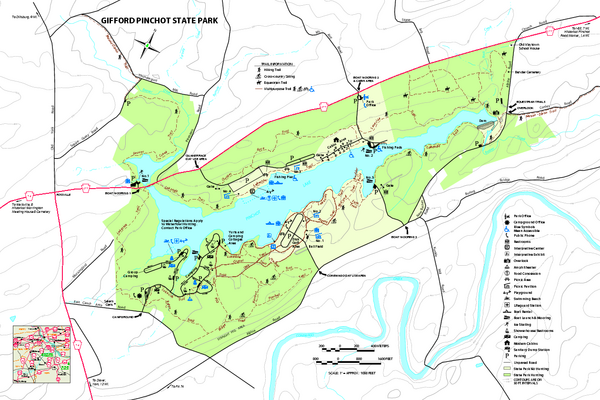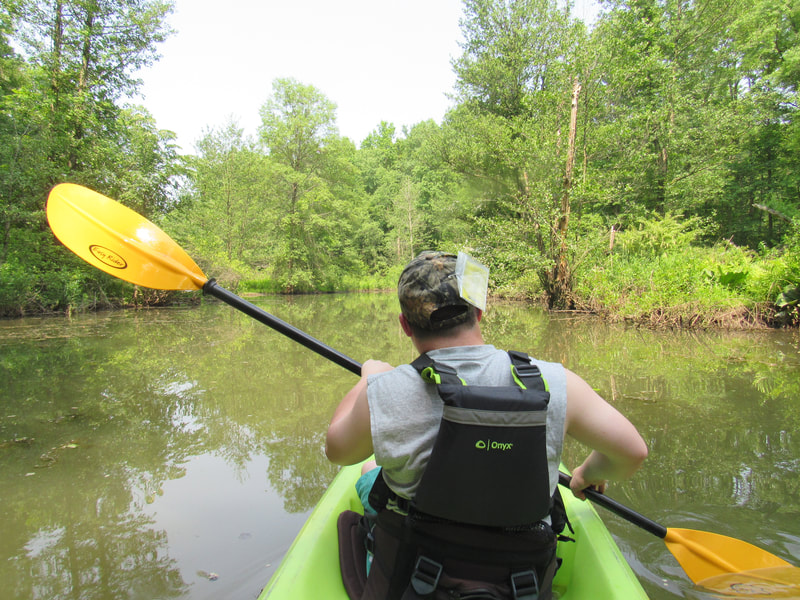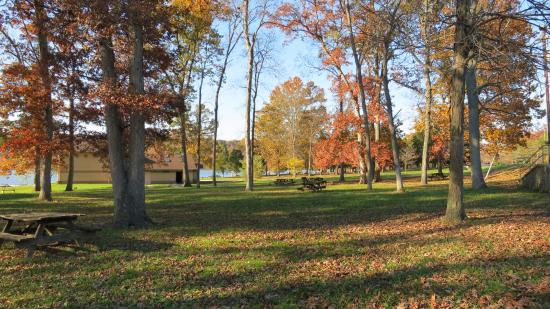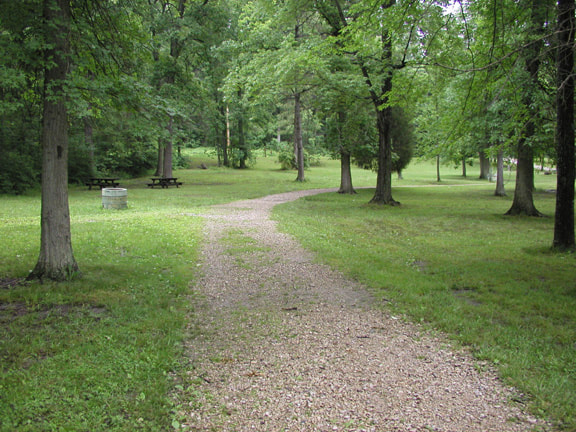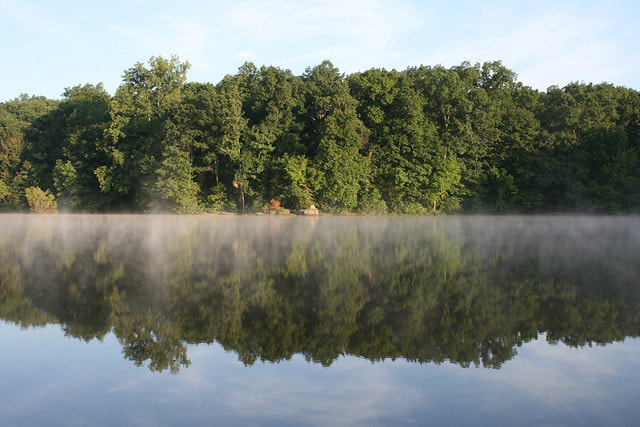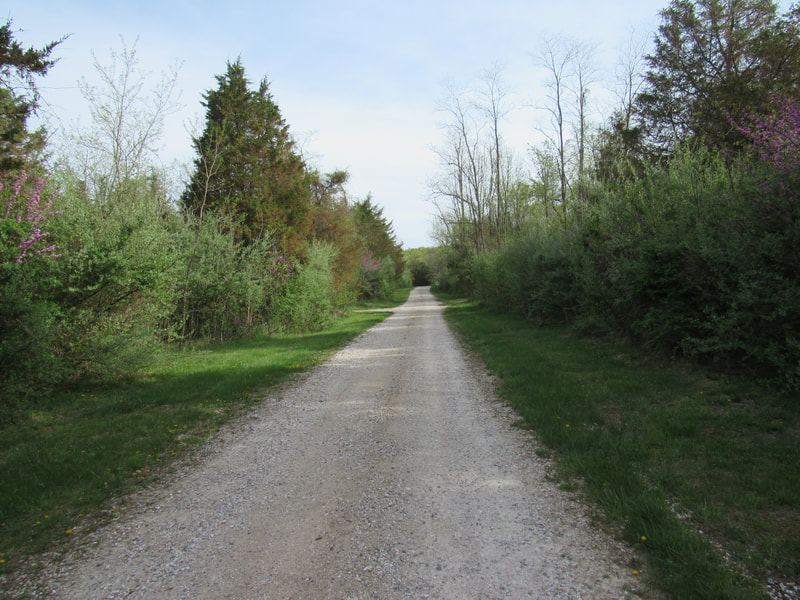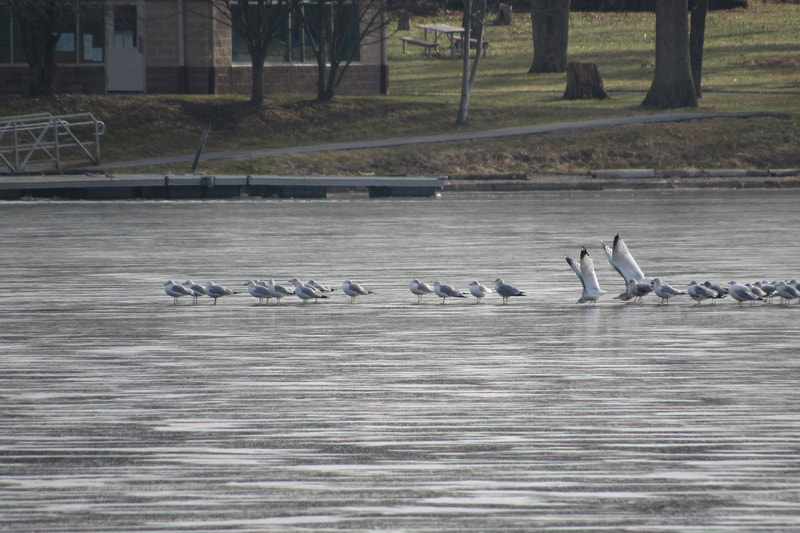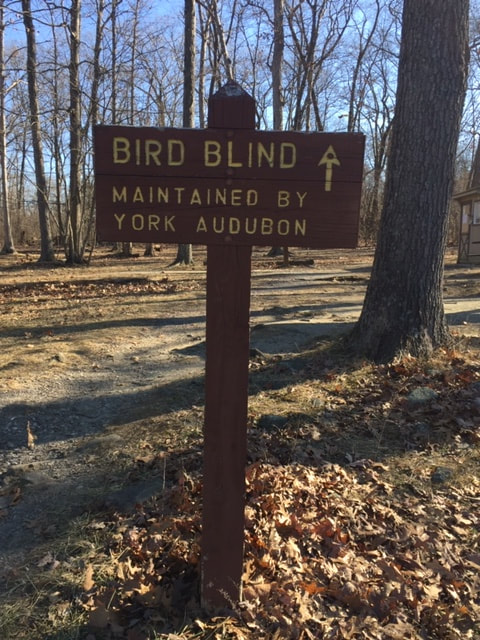#1 Gifford Pinchot State Park
Property Manager: Pennsylvania Department of Conservation and Natural Resources (717) 432-5011
GPS address: 2200 Rosstown Road, Lewisberry, PA, 17339
Hours: Dawn until Dusk
Parking: There are 8 parking areas within the park. All of them are good for birding. Two popular accesses are Quaker Race Day Use Area and Conewago Day Use Area are in the middle of the park on opposite sides of the lake.
Restrooms: Quaker Race and Conewago have a restroom open all year, but the other restrooms are only open during the busier season Memorial Day-Labor Day.
Safety Reminders: Hunting and waterfowl hunting is permitted in some areas of the park. Wear orange during hunting season. Cell phones do not always work in this park. Always carry a map. Mountain biking and horseback riding are permitted here in some areas.
Best Birding: All seasons, dawn until dusk. Less crowded early in the morning and from October-April.
Site Description: Pinchot State Park may be the best birding location in the county on some days during the migration season. The rather long skinny lake has an 8 mile long Lakeside Trail that allows a hiker/birder to traverse the entire park with a short section of hiking on the road at one end of the trail. Good birding is not far from some of the main parking areas. In an attempt to split up this big birding gem in northern York County one can look at birding areas as they pertain to parking access, as birding the entire park is generally not feasible unless one has all day to do so. Along with all the typical Atlantic Flyway gulls, waterfowl, waders, shorebirds, and terns, reports of seldom viewed waterbirds in York from this lake include Red-necked Grebe, Red-throated Loon, Greater White-fronted Goose, Yellow-crowned Night-Heron, and American Bittern.
Starting at the parking for Boat Mooring Area #1 on PA-177 near Rossville, one can access two trails or the lake via boat. Access here if you wish to hike Beaver Creek or the far western edges of Lakeside trail. Birding by boat along Beaver Creek is a great option too. For hikers walk north towards the woods and cross the small foot bridge onto the Beaver Creek Trail, and for kayakers head away from the bridge and head north toward the narrow creek that feeds Pinchot Lake. The creek is home to its namesake mammal, but for birders it is special in summer as later in the morning the area along the creek stays active with woodland birds longer into the afternoon. Wetland birds, Wood Ducks, and herons are often active in the area where Beaver Creek widens into the lake. The spatterdock (vegetation) there seems perfect for Common Gallinule and rails in migration, though few are reported here. It is good for many species of dabbling ducks. The Beaver Creek Trail overlaps with the Mason-Dixon Trail which eventually exits the park, but before it does the trail goes through excellent yet swampy woodland habitat perfect for Red-shouldered Hawk and Barred Owl. Veery, Wood Thrush, Eastern Wood-Pewee, Scarlet Tanager, Common Grackle, and Ovenbird all breed along the trail. The Lakeside Trail which also has portions that overlap with the Mason-Dixon can be reached at this parking area by crossing the road, a direct road crossing starts one toward the camping area around the lake, and a hike along the road to the other side of the PA-177 bridge over the lake starts you on the Lakeside Trail towards the Quaker Race Day Use area. Both sides of this trail are great for forest birding.
A short uphill drive from the first parking area discussed north on PA-177 takes a birder to the Quaker Race Day Use Area. This area has plenty of parking and plenty of trails and perhaps the best overall views of the lake. The Quaker Race Trail located in the back of the parking area near the disc golf course is a nice way to look in the upland hills of the park for Wild Turkey and other upland forest birds like Yellow-throated Vireo. It is not great for views of the lake or waterbirds. On the other side of the parking area is the lake itself which is always worth a quick scan. At both ends of the swimming area stands of Alder and other small trees were planted at the edge of the lake. These small stands are great for warblers in migration. The Lakeside trail enters/exits the southwest end of the swimming area by crossing a small foot bridge. Hike up past the invasive bamboo and through the thickets to the Virginia Pines until coming to a clearing with a stone maintenance road. There will be a park building there, walk down to the lake edge and scan the lake on either side of the land that sticks out into the lake. The clearing is usually good for a couple migrants depending on the season. Follow the stone maintenance road for some edge habitat, pines, and red cedars (sometimes Pine Siskin and Red-breasted Nuthatch feed here in winter). When you come to the yellow gate make a right and head back to the parking area for a nice relatively short loop, or if you are feeling strong pick up the Quaker Race Trail on the other side of the driveway from the yellow gate. Take Quaker Race to the cabin area and Boat Mooring Area #2. You may also wish to park at Boat Mooring Area #2. Winter Wrens and both kinglet species are often hanging around this area and the nearby cabin area in winter. The Boat Mooring Area #2 and cabins can be reached quickly (20 minute walk) along the Lakeside trail if you travel east from the Quaker Day Use Area. No matter which way you hike or park the Lakeside Path to Boat Mooring Area #2 and the cabins is worth doing in any season. A thicket that was once more field habitat has since grown up and created a different habitat for a variety of more secretive sparrows, warblers, and other thicket dwellers along the maintenance road that connects the cabin area to Quaker Race Day Use, another great walking option in this area.
The dam and spillway have parking access along Alpine Road. There are limited opportunities for waterfowl at the small gravel lot before the bridge over the creek. The only portion of the lake visible from the dam breast itself is quite small. The dam breast is not wooded and rarely open country sparrows and other open land birds can be found here. It is common to see Eastern Bluebird and Tree Swallow here breeding in the nestboxes. The wooded hilly area and exiting creek will be active with warblers, wrens, and woodpeckers. Louisiana Waterthrush, Osprey, Northern Parula, Yellow-bellied Sapsucker, and Belted Kingfisher are found here in season. To hike to this Alpine Road access where the creek exits the spillway, hike on Lake Side Trail from Conewago Day Use or Boat Mooring Area #3 on Alpine Road. The equestrian parking area also on Alpine Road (closest to Alpine Road’s intersection with PA 177) is another location where birding this end of the lake is possible. A better view of the lake at this end is a short hike from the equestrian parking area towards the lake. The equestrian parking location is also accessible by a long hike on Lakeside Trail North from Boat Mooring Area #2. This is a great forest birding hike passing White Pine stands, open forests, and thickets. The equestrian parking area has many red cedars and these can be productive in winter.
The final area(s) are on the south shore of the lake Boat Mooring Area #3, Conewago Day Use, and the campground. These areas are connected by the Lakeside Trail and all have good views of the lake in the morning light. The parking area by the Conewago Day Use Area is locally known as a reliable location for the Red-headed Woodpecker (Sept-May). This woodpecker species sometimes winters here in good numbers. It is often foraging in the large oaks found between the lake and the parking area. At Conewago Day Use a spit of land planted with Norway Spruce sticks out into the lake, this location has been good for scanning the lake and migrant warblers that are often found in spruce trees.
At the opposite (southern) end of the Conewago parking area, there is also a bird blind near the entrance to the Boulder Woods Disc Golf course. The blind is approximately 50 yards into the woods, and there is a small sign at the trail entrance off the parking lot noting the location of the short trail. Feeders are stocked by the York Audubon Society during the winter months, and can attract large numbers of local winter birds.
The Ridge Trail near the Conewago Day Use Area and various other trails in the upland area can also take a hiker to the campground or connect to the Lakeside Trail. There are several areas within the camping area that are really great birding because of the amount of edge habitat in the campground loops. The campground also affords great views of the lake. Hiking west on the lakeside trail from the main parking area at the entrance of the campground will bring a birder back to the Boat Mooring Area #1 and the Beaver Creek Trail. This hike can feel long and quite muddy in the spring, but it passes through diverse woodland habitats.
Property Manager: Pennsylvania Department of Conservation and Natural Resources (717) 432-5011
GPS address: 2200 Rosstown Road, Lewisberry, PA, 17339
Hours: Dawn until Dusk
Parking: There are 8 parking areas within the park. All of them are good for birding. Two popular accesses are Quaker Race Day Use Area and Conewago Day Use Area are in the middle of the park on opposite sides of the lake.
Restrooms: Quaker Race and Conewago have a restroom open all year, but the other restrooms are only open during the busier season Memorial Day-Labor Day.
Safety Reminders: Hunting and waterfowl hunting is permitted in some areas of the park. Wear orange during hunting season. Cell phones do not always work in this park. Always carry a map. Mountain biking and horseback riding are permitted here in some areas.
Best Birding: All seasons, dawn until dusk. Less crowded early in the morning and from October-April.
Site Description: Pinchot State Park may be the best birding location in the county on some days during the migration season. The rather long skinny lake has an 8 mile long Lakeside Trail that allows a hiker/birder to traverse the entire park with a short section of hiking on the road at one end of the trail. Good birding is not far from some of the main parking areas. In an attempt to split up this big birding gem in northern York County one can look at birding areas as they pertain to parking access, as birding the entire park is generally not feasible unless one has all day to do so. Along with all the typical Atlantic Flyway gulls, waterfowl, waders, shorebirds, and terns, reports of seldom viewed waterbirds in York from this lake include Red-necked Grebe, Red-throated Loon, Greater White-fronted Goose, Yellow-crowned Night-Heron, and American Bittern.
Starting at the parking for Boat Mooring Area #1 on PA-177 near Rossville, one can access two trails or the lake via boat. Access here if you wish to hike Beaver Creek or the far western edges of Lakeside trail. Birding by boat along Beaver Creek is a great option too. For hikers walk north towards the woods and cross the small foot bridge onto the Beaver Creek Trail, and for kayakers head away from the bridge and head north toward the narrow creek that feeds Pinchot Lake. The creek is home to its namesake mammal, but for birders it is special in summer as later in the morning the area along the creek stays active with woodland birds longer into the afternoon. Wetland birds, Wood Ducks, and herons are often active in the area where Beaver Creek widens into the lake. The spatterdock (vegetation) there seems perfect for Common Gallinule and rails in migration, though few are reported here. It is good for many species of dabbling ducks. The Beaver Creek Trail overlaps with the Mason-Dixon Trail which eventually exits the park, but before it does the trail goes through excellent yet swampy woodland habitat perfect for Red-shouldered Hawk and Barred Owl. Veery, Wood Thrush, Eastern Wood-Pewee, Scarlet Tanager, Common Grackle, and Ovenbird all breed along the trail. The Lakeside Trail which also has portions that overlap with the Mason-Dixon can be reached at this parking area by crossing the road, a direct road crossing starts one toward the camping area around the lake, and a hike along the road to the other side of the PA-177 bridge over the lake starts you on the Lakeside Trail towards the Quaker Race Day Use area. Both sides of this trail are great for forest birding.
A short uphill drive from the first parking area discussed north on PA-177 takes a birder to the Quaker Race Day Use Area. This area has plenty of parking and plenty of trails and perhaps the best overall views of the lake. The Quaker Race Trail located in the back of the parking area near the disc golf course is a nice way to look in the upland hills of the park for Wild Turkey and other upland forest birds like Yellow-throated Vireo. It is not great for views of the lake or waterbirds. On the other side of the parking area is the lake itself which is always worth a quick scan. At both ends of the swimming area stands of Alder and other small trees were planted at the edge of the lake. These small stands are great for warblers in migration. The Lakeside trail enters/exits the southwest end of the swimming area by crossing a small foot bridge. Hike up past the invasive bamboo and through the thickets to the Virginia Pines until coming to a clearing with a stone maintenance road. There will be a park building there, walk down to the lake edge and scan the lake on either side of the land that sticks out into the lake. The clearing is usually good for a couple migrants depending on the season. Follow the stone maintenance road for some edge habitat, pines, and red cedars (sometimes Pine Siskin and Red-breasted Nuthatch feed here in winter). When you come to the yellow gate make a right and head back to the parking area for a nice relatively short loop, or if you are feeling strong pick up the Quaker Race Trail on the other side of the driveway from the yellow gate. Take Quaker Race to the cabin area and Boat Mooring Area #2. You may also wish to park at Boat Mooring Area #2. Winter Wrens and both kinglet species are often hanging around this area and the nearby cabin area in winter. The Boat Mooring Area #2 and cabins can be reached quickly (20 minute walk) along the Lakeside trail if you travel east from the Quaker Day Use Area. No matter which way you hike or park the Lakeside Path to Boat Mooring Area #2 and the cabins is worth doing in any season. A thicket that was once more field habitat has since grown up and created a different habitat for a variety of more secretive sparrows, warblers, and other thicket dwellers along the maintenance road that connects the cabin area to Quaker Race Day Use, another great walking option in this area.
The dam and spillway have parking access along Alpine Road. There are limited opportunities for waterfowl at the small gravel lot before the bridge over the creek. The only portion of the lake visible from the dam breast itself is quite small. The dam breast is not wooded and rarely open country sparrows and other open land birds can be found here. It is common to see Eastern Bluebird and Tree Swallow here breeding in the nestboxes. The wooded hilly area and exiting creek will be active with warblers, wrens, and woodpeckers. Louisiana Waterthrush, Osprey, Northern Parula, Yellow-bellied Sapsucker, and Belted Kingfisher are found here in season. To hike to this Alpine Road access where the creek exits the spillway, hike on Lake Side Trail from Conewago Day Use or Boat Mooring Area #3 on Alpine Road. The equestrian parking area also on Alpine Road (closest to Alpine Road’s intersection with PA 177) is another location where birding this end of the lake is possible. A better view of the lake at this end is a short hike from the equestrian parking area towards the lake. The equestrian parking location is also accessible by a long hike on Lakeside Trail North from Boat Mooring Area #2. This is a great forest birding hike passing White Pine stands, open forests, and thickets. The equestrian parking area has many red cedars and these can be productive in winter.
The final area(s) are on the south shore of the lake Boat Mooring Area #3, Conewago Day Use, and the campground. These areas are connected by the Lakeside Trail and all have good views of the lake in the morning light. The parking area by the Conewago Day Use Area is locally known as a reliable location for the Red-headed Woodpecker (Sept-May). This woodpecker species sometimes winters here in good numbers. It is often foraging in the large oaks found between the lake and the parking area. At Conewago Day Use a spit of land planted with Norway Spruce sticks out into the lake, this location has been good for scanning the lake and migrant warblers that are often found in spruce trees.
At the opposite (southern) end of the Conewago parking area, there is also a bird blind near the entrance to the Boulder Woods Disc Golf course. The blind is approximately 50 yards into the woods, and there is a small sign at the trail entrance off the parking lot noting the location of the short trail. Feeders are stocked by the York Audubon Society during the winter months, and can attract large numbers of local winter birds.
The Ridge Trail near the Conewago Day Use Area and various other trails in the upland area can also take a hiker to the campground or connect to the Lakeside Trail. There are several areas within the camping area that are really great birding because of the amount of edge habitat in the campground loops. The campground also affords great views of the lake. Hiking west on the lakeside trail from the main parking area at the entrance of the campground will bring a birder back to the Boat Mooring Area #1 and the Beaver Creek Trail. This hike can feel long and quite muddy in the spring, but it passes through diverse woodland habitats.

